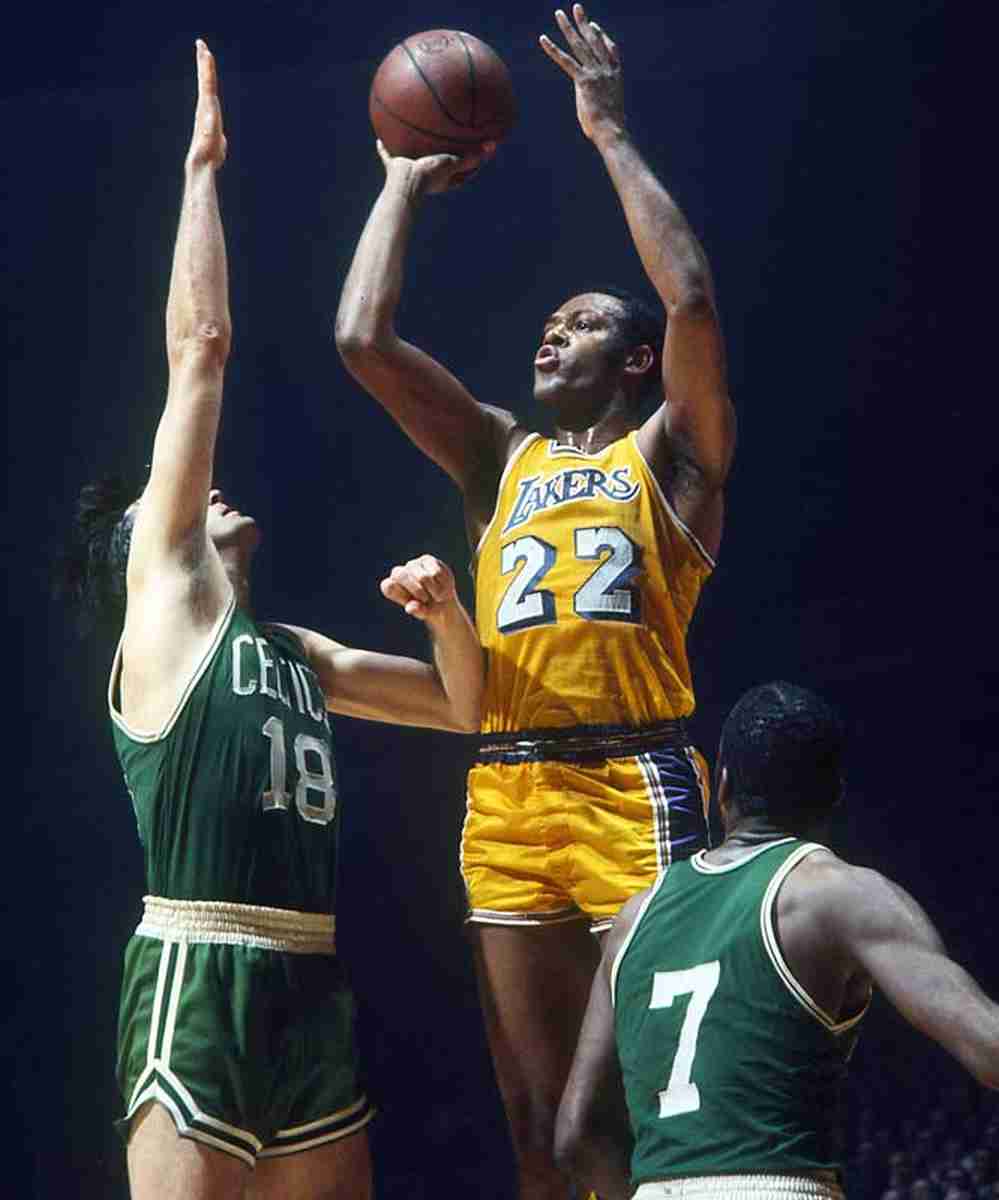I played countless games of backyard basketball with my older brother Randy. As far as college hoops, we both liked the hometown SMU Mustangs. In the pros, however, we diverged. He favored the Boston Celtics, and I, almost by default, took the Los Angeles Lakers. Randy’s favorite player with the Celts was, if I remember correctly, guard Bob Cousy. By much the same illogic I used in picking Eddie Matthews in baseball, I decided that Elgin Baylor was my man. I liked the sound of his name, for crying out loud!
That alone did not compel me to go with the Lakers’ 6' 5'' forward. He was also a superb player—one of the best of his era or any era, for that matter. Baylor had an interesting college career. Because of lackluster grades at Spingarn High School in Washington, D.C., he was scarcely recruited despite winning all-city honors thrice. He somehow landed at a remote institution called the College of Idaho. After averaging 31 points and 19 rebounds per game as a freshman, he transferred to Seattle University. In two seasons with the Chieftains, he had similar numbers. Baylor was the primary reason SU reached the 1958 NCAA title game. Although he had suffered a rib injury in the semifinals, he scored 25 points in a losing effort against Kentucky; he was named tournament MVP. One wonders whether Adolph Rupp, after seeing Baylor strut his stuff, might have considered integrating the UK program. But no—he waited another dozen years.
Baylor was the No. 1 overall pick in the 1959 NBA draft, going to the Minneapolis Lakers. He made quite a splash, essentially saving that franchise from bankruptcy, according to then-owner Bob Short. He was rookie of the year with 25/15 and took a team that had been easily the league’s worst in 1958 to the finals in ’59. They got swept by the Celtics, however. This, I acknowledge with some chagrin, would be a recurring pattern for the next decade. Randy’s chosen club beat mine in the finals again in 1962, 1963, 1965, 1966, 1968 and 1969. Boston’s boys in green had a better coach (Red Auerbach), plus Cousy, Bill Russell and fine supporting players. The Lakers—who moved to Los Angeles in 1960—had Baylor and guard Jerry West. You can’t win in basketball with just two guys.
There had been fine players before Elgin Baylor arrived, but he signaled the start of something new. He could levitate like few others and had a knack for creating shots. He led the way for high-flyers like Connie Hawkins, Julius Erving, Michael Jordan, Kobe Bryant and LeBron James. The Lakers’ No. 22 was nimble and yet strong as an ox. He was an excellent passer, although he saved his energy on defense. Hey, nobody's perfect.
Too few people remember what Baylor did in the 1962 season while serving in the U.S. Army Reserve. He lived in a barracks with fellow soldiers in Washington state and was allowed to travel on weekends to join his teammates in Los Angeles or on the road in Cincinnati, Syracuse, Detroit, St. Louis and elsewhere. Baylor arrived as soon as he could, threw on a uniform and averaged a staggering 38 points, 19 rebounds and 5 assists in the 48 games he played. He carried the Lakers to the cusp of the NBA title, losing in seven to Boston. In Game 5, he had 61 points and 22 rebounds. How’s that for coming up big when it counts?
A knee injury in the 1964 season curtailed his success to a degree, but he still made first-team all-NBA several more times before finally retiring early in 1972. That was the year West, Wilt Chamberlain, Gail Goodrich et al. finally got the LA Lakers a championship. (They had won five in Minneapolis.)
Baylor’s legacy was somewhat tarnished by what came next. He coached the New Orleans Jazz for three seasons, none of which were very successful despite the presence of the high-scoring Pete Maravich. Most of all, however, Baylor served as general manager of the Los Angeles Clippers for 22 woeful seasons. Was he a bad GM? Most people would say so. Lots of the players he drafted were busts, and by the same token he passed on many who would go on to great things. Still, had he not been hamstrung by a cheap owner (Donald Sterling) for whom winning was a secondary concern, he could have done far better.
Nevertheless, let the record show that Baylor finished his playing career with 23,149 points, 11,463 ribbies and 3,650 assists. There are few clips of him on YouTube, but if you look hard you can see Baylor displaying mid-air acrobatics, speed and maneuverability that would work quite well in today’s game.


Add Comment